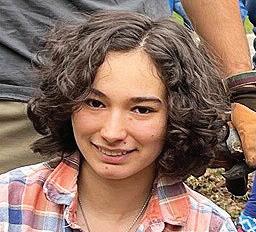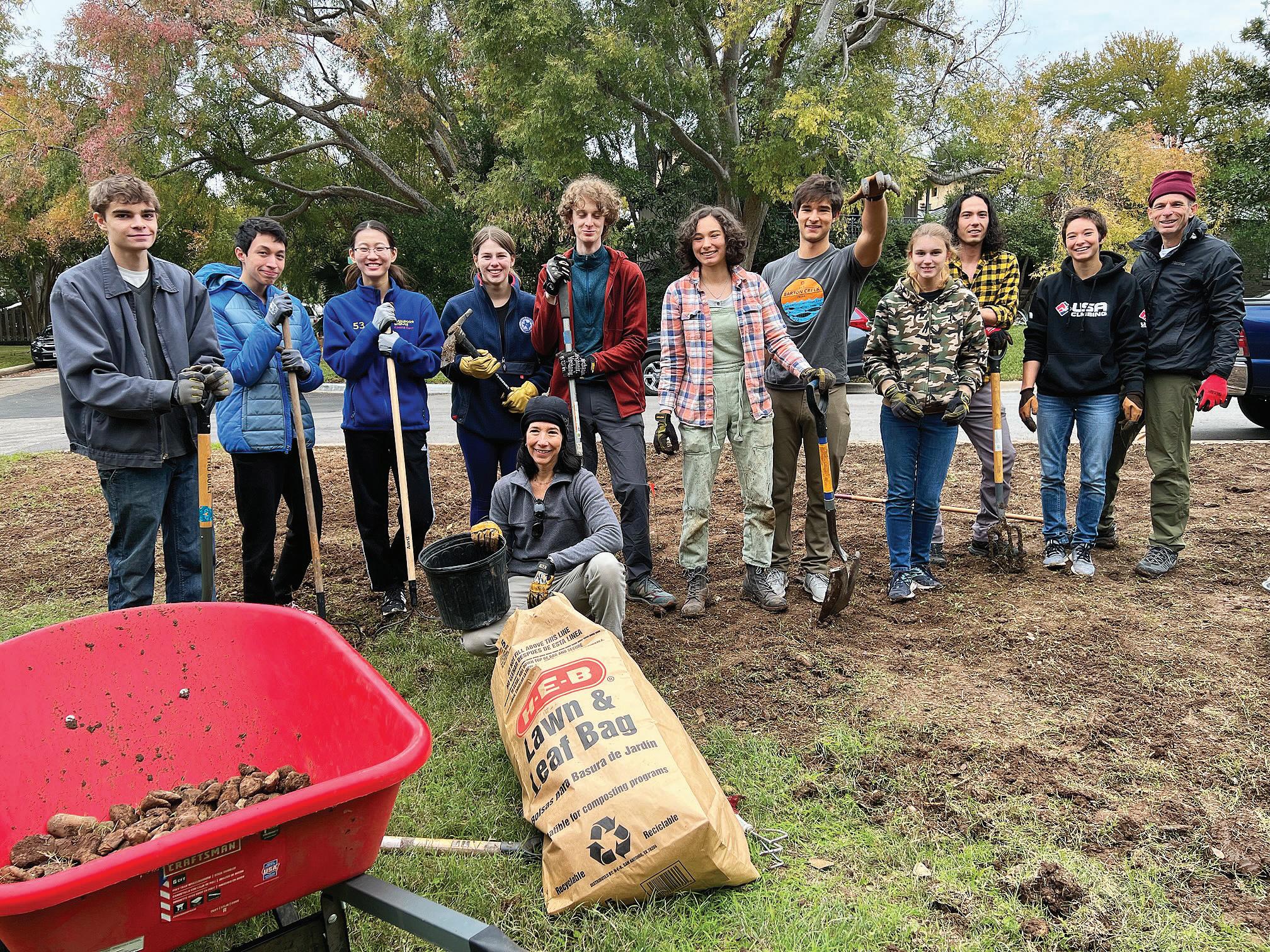
4 minute read
Juliette Madere
from WAN 1/26/23
BY FORREST PREECE
She’s an 18-year-old senior at Anderson High enrolled in the rigorous International Baccalaureate program. But she has found time to zero in on a median bounded by Elton Lane, Woodmont, and Forest Trail – where she and interested volunteers are planting native vegetation, which will provide a habitat for birds and other pollinators, and make a dent in global warming. Her interest in the environment goes back to middle school, when she and some friends became aware of issues like habitat loss and the impending extinction of certain species. They decided to form a non-profit called Lifeblood of Gaia to provide information about these problems and to do what they could to help counteract them. They sold baked goods to raise money for their group, and they kept their funds in a cigar box.
Advertisement
When she moved on to high school, she started recognizing the scope of the environmental challenges ahead. Looking for a way to get involved, she applied and was accepted into the Youth Forest Council in the city’s Urban Forestry Department, where she worked as an intern for a year. She enjoyed that experience and learned a significant amount, but she was becoming discouraged because, in her mind, the enormity of the problems the world faced meant that one person just could not take them on all at once.

THINK GLOBALLY, ACT LOCALLY
Around that time, she read a book by Doug Tallamy called “Nature’s Best Hope,” which posits that the solution for climate change starts in people’s backyards, one at a time. “The numbers in his book were encouraging,” Juliette says. The theory is that if enough people install the right kinds of native plants instead of water-guzzling grass, and make wildlife refuges in their private spaces, eventually change will happen.
Up to that point, she had heard “grim figures.” But if this one yard at a time movement spread, bigger issues could be solved. As an intern at the Youth Forest Council, she created a useful guide called “Austin Homegrown Parks,” which outlines the types of plants property owners can integrate into their landscapes and provides information on resources available in Austin for those interested in making their own foray into the movement.
The guide provides a five-step program to execute native planting in anyone’s yard. It includes helpful insight as well. For instance, did you know that leaving leaf litter and large decorative rocks in your garden provides pupation sites and hiding places where caterpillars can propagate? These insects are crucial in providing nourishment for birds and making the food chain thrive. Her guide also has a link to the Homegrown National Park map so that anyone can place their yard on it and gain perspective that they are part of a nationwide project. This national map also provides statistics about how many people are making their yards a part of the project in each city, county and state.
Two examples of birds and animals that are being forced out of the environment around Austin are meadowlarks and ocelots (yes, ocelots). Meadowlarks nest at the base of bunch grass plants which are becoming less and less common. And I doubt if anyone in West Austin has ever seen an ocelot near their home. Juliette says that they used to be fairly common in Central Texas, but the native environs that nurtured the ocelots have been wiped out and accordingly, so was the presence of the animals.
Rewilding For Renewal
median around the corner from her house. After completing the Youth Forest Council internship, Juliette was not going to just pay lip service to recognizing the problem and then move on to something else. She started implementing a plan to make her idea a reality.
Juliette says. By the way, Juliette’s parents have pitched in and helped her with the median, and they have planted a lot of the correct species of flora in their own yard.
Juliette smiles and says that they are suddenly noticing a lot of butterflies around their neighborhood.
LEADING A WELLROUNDED LIFE.
I LOVE THAT WE WILL BE INTRODUCING EVERYONE IN THE NEIGHBORHOOD TO THIS IDEA.”

JULIETTE MADERE ON CREATING AN ATTRACTIVE LOOK THAT SUPPORTS THE ENVIRONMENT
All of this leads up to Juliette’s current “rewilding” project, which simulates a native ecosystem on the
Several months ago, she spoke to the West Austin Neighborhood Group’s board and obtained buy-in on her project from them. Then she worked for three months with the city to get permission to proceed. She and her supporters will be planting bunch grass, little bluestem, and wildflowers such as gray goldenrod, among others. Special care will be taken not to trim the perennials down to ground level during the winter, the way most people with yards do. Many of these flowers have hollow stalks where insects hibernate. When cutting them back, people often harm the insects already there and remove their habitats.

When Juliette and her crew have the median planted the way they want it, it will be a 24/7 example of what can be done to help the environment, while maintaining an attractive look for the neighborhood.
“I love that we will be introducing everyone in the neighborhood to this idea,”
All the members of Juliette’s family enjoy climbing competitions. She was seven when she started going to camps and she joined a team when she was 13. Juliette has been to youth national level competitions twice—once in Redmond, Oregon and once in Chicago. Last summer, she was training very hard both in sport climbing, which uses a rope, and in bouldering, which uses a shorter wall and a big pad. But she has had to deemphasize this sport to concentrate on her academics.

Music is another love of hers, but she had to prioritize and give up her cello playing after the eighth grade. Right now, she is applying to colleges and hoping that she gets into a program that combines biology and art as a major. At college, she wants to keep learning science and to do research, but on the other hand, she desires to maintain development of her artistic skills.
By the way, anyone who wants to work with Juliette on her project can reach her at juliette@stevemadere.com.










